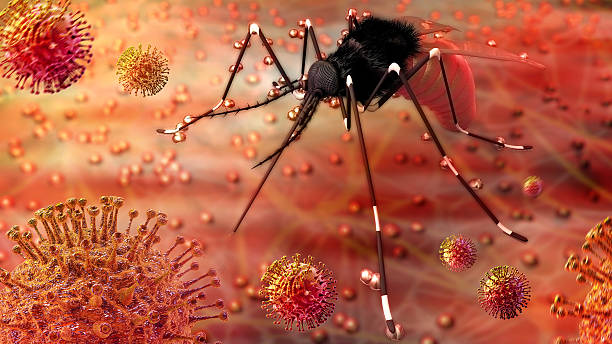By Morgan Nwanguma
Scientists have developed two innovative bed net prototypes designed to combat malaria by targeting the blood parasites responsible for the disease. Using their expertise in drug formulation and manufacturing, researchers at Southwest Research Institute (SwRI) created netting systems that release antimalarial compounds known as Endochin-like Quinolones (ELQs), which kill Plasmodium parasites carried by mosquitoes. The project was a collaborative effort with the Harvard T.H. Chan School of Public Health and Oregon Health & Science University (OHSU)/Portland Veterans Affairs Medical Center (PVAMC). The results are detailed in the latest issue of Nature.
“If an infected mosquito hits or lands on either type of netting, it’s essentially disinfected,” said Institute Scientist Dr. Mike Rubal, a contributor to the Nature article. “The best defense against malaria has been insecticide-treated bed nets or those coated with larvicides, but mosquitoes are developing an immunity to those prevention methods. This novel approach targets the source of the disease.”
In 2023, the World Health Organization recorded 263 million malaria cases and nearly 600,000 related deaths globally. Despite existing prevention and treatment options, the disease remains widespread, with growing resistance to larvicides and pesticides posing a major challenge for researchers.
To address this, Rubal’s team coated a commercially available polyester bed net with an ELQ solution developed at OHSU/PVAMC. In a second approach, Southwest Research Institute (SwRI) incorporated an ELQ formulation into a hot-melt extrusion of high-density polyethylene filaments, which can be woven into netting yarn. Both netting systems were tested for effectiveness by researchers at Harvard’s Catteruccia Lab.
“We desperately need innovation in malaria control. This study offers a new, effective way to stop the transmission of malaria parasites, which we hope will reduce the burden of this devastating disease in Africa and beyond,” said corresponding author Dr. Flaminia Catteruccia, the Irene Heinz Given Professor of Immunology and Infectious Diseases at Harvard and Howard Hughes Medical Institute Investigator.
Found in tropical and subtropical regions worldwide, female Anopheles mosquitoes transmit malaria parasites to humans through their saliva during a bite. Once inside the body, the parasites invade the liver and red blood cells, triggering symptoms that can range from mild discomfort to severe illness. Without treatment, malaria can cause brain damage, organ failure, and even death—particularly among children and other vulnerable groups.
“Our research shows that the two drugs, which are absorbed through the legs of the insect, kill parasites developing within the mosquito. By using two different ELQs, the likelihood of resistance is greatly diminished and possibly eliminated,” said Dr. Michael Riscoe, a professor of molecular microbiology and immunology at OHSU. “This emerging technology has great potential to impact efforts to control and eradicate malaria around the world.”
A National Institute of Health (NIH) R01 grant including financial backing from Open Philanthropy supported the study.





